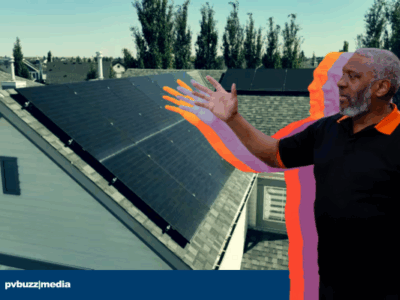IKEA’s research lab, Space10, has crafted a miniature wooden village to demonstrate how communities could create their own circular clean energy system.

Space10 and architecture practice SachsNottveit brought the idea to life with blockchain experts BLOC, Blocktech, and WeMoveIdeas, which would allow small towns to make and share their own affordable, renewable energy. The installation is a working prototype of a village, called SolarVille, built to a 1:50 scale. It comprises a series of miniature wooden houses illuminated by an overhanging lamp to imitate the sun.

The concept sees households generate their own renewable energy using solar panels, and any excess electricity generated can be purchased by other households in the community directly from the producer using blockchain technology. It aims to democratize access to renewable energy by establishing co-operative micro-grids in village communities.

Space10 and SachsNottveit chose to build the village from hardwood for its “warm and natural” qualities, which they felt contrasted with the technical nature of the project. Rows of small LEDs embedded in the front of each house on the installation light up to show the energy traded within the community, while a hatch on the side of the table allows visitors to see the real-time energy transactions taking place via the blockchain technology.
These features allow visitors to observe and interact with a functioning and scalable system of energy resources being traded in a peer-to-peer blockchain network as it’s happening.

The model village uses solar panels to harness the free and abundant energy from the sun, ensuring that the system can efficiently store any excess energy received for a rainy day. This energy is then distributed using wires to connect households in the local neighborhood together to create a standalone micro-grid.

The blockchain technology offers a secure and decentralized trading platform. It records and stores the direct energy transactions between people, and automatically intervenes when certain conditions aren’t met. This reduces transaction costs as well as increasing transparency and security.

The creators of SolarVille believe that it is possible to put these measures into place today. Space10 – an innovation lab set up by IKEA – continually aims to develop designs for a more sustainable future. The lab previously devised a menu of mealworm burgers and algae hotdogs that could offer the answer to the predicted global food crisis.
This slideshow is adapted from an original article published by dezeen.
Photography is by Irina Boersma.












Comments